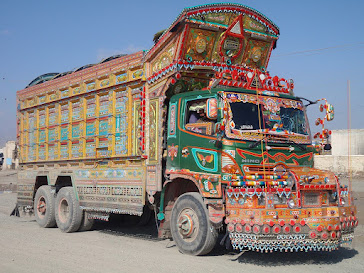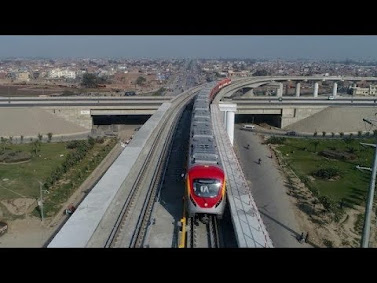Transport in Pakistan plays a critical role in the country's economic development and social integration. With a population exceeding 240 million, efficient transportation networks are crucial to support trade, mobility, and overall growth. Over the years, Pakistan has invested heavily in developing its road, rail, air, and sea transport systems to better connect urban centers, rural areas, and international markets.
Road Transport in Pakistan
Road transport is the most commonly used mode of transport in
Pakistan. According to the National Transport Research Centre, over 90% of
inland freight and over 95% of passenger traffic depend on road
networks. The country boasts a network of highways, motorways, and local roads
that link major cities and remote areas.
The National Highway Authority (NHA) manages key arteries
like the Motorway M-2 (linking Lahore to Islamabad) and the China-Pakistan
Economic Corridor (CPEC) projects, which have introduced new highways and
upgraded existing roads. These developments have improved the efficiency and
safety of road transport in Pakistan, though challenges like traffic
congestion, poor maintenance in some areas, and rising vehicle emissions
remain.
Rail Transport in Pakistan
Railways once formed the backbone of transport in Pakistan.
Operated by Pakistan Railways, the railway network covers around 7,791
kilometers. It connects major cities like Karachi, Lahore, Rawalpindi, and
Peshawar, offering both passenger and freight services.
However, due to decades of neglect, the railway system has
faced serious decline. Recent government initiatives, including modernization
projects and collaboration under CPEC, aim to revitalize rail transport.
Upgrading the Main Line-1 (ML-1) is a priority project that seeks to boost
speeds, enhance safety, and reduce travel time.
Efficient rail transport in Pakistan could greatly reduce
logistical costs and lessen the burden on roads, making it a key focus for
sustainable development.
Air Transport in Pakistan
Air transport in Pakistan has seen rapid growth, particularly
with the expansion of domestic airlines and international connectivity. The
country is home to several international airports such as Jinnah
International Airport (Karachi), Allama Iqbal International Airport
(Lahore), and the newly built Islamabad International Airport.
Pakistan International Airlines (PIA) is the national
carrier, though private airlines like Air Blue and Serene Air have also gained
significant market share. Air transport is vital for business, tourism, and
connecting remote areas like Skardu and Gilgit, which are otherwise hard to
reach.
Increased air traffic, new routes, and improved airport
facilities are making air transport a more attractive and reliable option in
Pakistan.
Sea Transport in Pakistan
Given its strategic location along the Arabian Sea, sea
transport in Pakistan is crucial for international trade. The country’s major
ports include Karachi Port, Port Qasim, and the recently
developed Gwadar Port.
Karachi Port handles the majority of Pakistan’s cargo, while
Gwadar, developed under CPEC, is expected to become a regional hub connecting
Central Asia, South Asia, and the Middle East. Investment in port
infrastructure and shipping logistics is aimed at boosting export capabilities
and reducing dependence on external ports.
Sea transport in Pakistan, if properly managed, can
significantly enhance the country’s economic position on the global stage.
Challenges Facing Transport in Pakistan
Despite considerable progress, transport in Pakistan faces
several challenges:
- Poor
maintenance and
outdated infrastructure in many areas.
- Urban
congestion in
cities like Karachi, Lahore, and Islamabad.
- Environmental
concerns due to
increased emissions from vehicles.
- Lack
of integrated transport planning, leading to inefficiencies across modes.
Addressing these issues requires strategic investment, better
regulations, and adoption of green technologies like electric vehicles and mass
transit systems.
Future of Transport in Pakistan
The future of transport in Pakistan looks promising. Major
projects like the Orange Line Metro Train in Lahore and Karachi’s
Green Line BRT are modernizing urban mobility. Moreover, initiatives like
smart transport systems, electric buses, and ride-sharing platforms are gaining
momentum.
Government policies focused on sustainability, innovation,
and public-private partnerships are essential to create a modern and efficient
transport system.
With continued investment and a focus on eco-friendly
solutions, transport in Pakistan is poised to meet the demands of its growing
population and expanding economy.
Meta
Description:
Learn about the evolving landscape of transport in Pakistan, covering road, rail, air, and sea transport,
challenges, and future prospects. Discover how transport shapes Pakistan’s
economy.




0 Comments